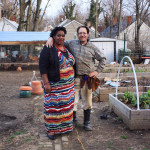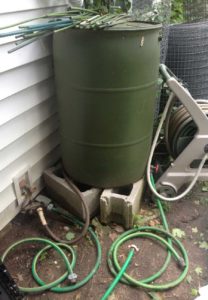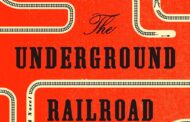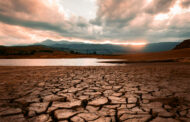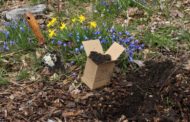The Amos Farm: WATER CONSERVATION
by Christian Torp
Why is water conservation an important step for the urban gardener? Well, here’s one reason:
Polluted runoff is one of the leading causes of pollution to our waters; degrading drinking water quality, killing fish and wildlife, and closing our beaches. According to the National Resources Defense Council, polluted runoff was the leading cause of beach closures in Connecticut and New York in 2010, causing 66% and 63% of closures, respectively. -Citizen’s Campaign for the Environment
As a general rule vegetable crops require 1” of water, per week during the growing season. Though certain crops require more, and some less, some will tolerate some water stress, and some will die. You should figure that your garden will need about this much, depending of course on ambient temperature, wind and your mulching and cultural practices.
It doesn’t matter how it gets the water, that’s up to you, and because your garden will languish and die if it doesn’t get enough water, “water conservation” is a misnomer, preventing waste is more accurate.
Evapotranspiration is the process through which your garden loses water. It is the combination of water loss incurred through plant ‘transpiration’, the process by which water moves from the roots to the leaves carrying nutrients and minerals with it, as well as the evaporation from the soil.
As you can see, there are two components of evapotranspiration, one of which is necessary for plant growth, and one of which isn’t. Let’s work on cutting that second one down.
As I said it ‘doesn’t’ matter how your plants get the water they need, and yet it does. How so? Insofar as a plant’s concerned if it has enough water, and not too much, it’s happy – but how and when you water has effects on your garden’s health beyond your plant’s life and death.
Be sure not to water too much as roots require both moisture and oxygen to live.
What? Plants need oxygen? But didn’t we all learn in middle school that trees were important because they converted carbon dioxide into oxygen? That’s just one more lie your teacher told you.
Trees do produce some oxygen. There is a net gain, but it’s not that much. Actually it’s oceanic phytoplankton that produce more than half of earth’s oxygen.
Healthy soil is half empty space, or “pore space,” and it’s in this empty space that the soil has its life. This is where water is stored, where minerals and nutrients migrate, where soil microbes thrive and where plants obtain most of their necessary nutrients and gasses. In this ecosystem the air/moisture ratio is imperative, and that, in the end, is why we need to water.
Look at watering through that lens. While plants need a certain amount of water to maintain turgor pressure (why “dry” plants wilt), plants don’t “need water,” they need the proper moisture ratio in the root zone for effective nutrient transfer. The key to conserving water is making sure that all of the water you’re giving your plants is doing that, and nothing else. Don’t give them too much.
A single, heavy watering is always better than shallow watering multiple times. Heavy, deeper watering forces your plants to grow their roots deeper into the soil, becoming better rooted and more drought tolerant as they do.
Likewise, let your soil partially dry out between watering, thereby leaving space for oxygen to come into the soil. Watch your plants for drought stress (i.e. wilting, dulling leaves) and then water accordingly, not by the calendar or by the clock, but when the plants tell you that it’s time.
Water conservation is all in how you get that water to your plants, and how to keep it there.
We all know the ubiquitous oscillating fan sprinklers or the clackety-clackety of an impulse type, but did you know that sprinklers waste from 30-50% through evaporation (before the water even hits the ground), leaky hoses, overwatering, and runoff? Don’t count on sprinklers for watering.
Hand watering is great for water conservation. Hand watering loses little to evaporation and is more efficient that automatic irrigation. Households that water with watering cans and garden hoses use 33% less water outdoors than homes with automatic sprinklers or drip irrigation systems. It is time consuming and labor intensive, so impractical in all but the smallest of farms.
Drip irrigation, whether using soaker hoses, drip tape or networks of mainline tubing and emitters, puts the water right on or in the soil, minimizing evaporation, overspray and missed areas. This is the way to go, instant watering with no more effort than turning the water on.
Now keep that water in the soil!
To do that, mind your watering times and mulch. Water in the mornings, doing so prevents evaporation in the midday heat and allows time for leaves to dry before evening, thus preventing disease while increasing water conservation.
Mulching your soil reduces soil evaporation, cools the soil, suppresses weed growth and, depending on the mulch used, may also provide nutrients for plant growth and improve soil structure.
At the Amos farm I’ve combined the wide-row planting method mentioned in the May ’16 installment, “Intensive Gardening,” with soaker hoses and mulches. I mulch by placing cardboard down, either around my plants or by planting directly through it and covering it with compost.
Ideally, I install soaker hoses after the cardboard but before the compost so that it is actually below soil level. The cardboard will decay and become soil. Furthermore, I have my rain-barrel set up immediately beside my hose spigot. I only have to use city water after I’ve already used up all the runoff I’d saved in my rain-barrel. Thereby, much of my watering is no more difficult or time consuming than turning the spigot on my rain barrel and making sure that I come back to stop it before I use up all 55 gallons of water.
In the future I hope to install more rain barrels in sequence so that I can store up 110 or 165 gallons of water that’d otherwise go to waste. How’s that for water conservation?
If you have any questions or comments for Christian, or there’s something you’d like to know more about, please reach out to him at theamosfarm@gmail.com.
Christian L. Torp is an attorney, missionary, activist, urban-farmer and advocate for social change who lives at Justice House (Facebook: Justice House) with his wife, Tanya in Lexington, KY.

